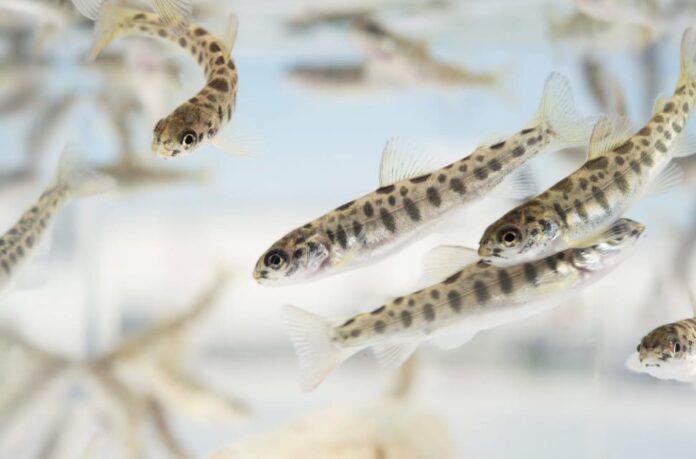A recent study conducted by the Norwegian Institute of Marine Research (Havforskingsinstituttet) has revealed low levels of virus infection in wild salmon.
This annual investigation, supported by the Norwegian Food Safety Authority (Mattilsynet), assesses if wild salmon migrating from rivers to the sea are infected by viruses originating from farmed fish.
This year’s virus check was performed on migrating salmon smolts from Romsdalsfjorden, Hardangerfjorden, and Boknafjorden. Researcher Abdullah Madhun highlighted that the low infection rate indicates minimal transmission of the virus to wild salmon during their migration to the sea. Such low infection levels also raise the possibility of some false positive results.
“The findings support previous results, suggesting that it is unlikely for wild fish to act as a virus reservoir infecting the farmed fish,” Madhun said.
Even with infected farmed fish present in the area where the wild salmon were caught, researchers didn’t find a comparable virus quantity in the wild salmon.
Despite these reassuring results, Madhun emphasized existing knowledge gaps regarding disease transmission between wild and farmed fish and how aquaculture activities impact this dynamic.
In the study, 180 smolts were analyzed for five common viruses found in Norwegian fish farms. Results indicated low concentrations of salmonid alphaviruses (SAV) linked to PD disease common in farmed fish in Western and Central Norway, in two fish. However, the low virus count made it challenging to determine if this was a weak or false detection.
There were no detection of the Infectious Salmon Anemia (ISA) virus, with only one outbreak reported in the production area where the fish were caught, suggesting a very low risk of wild salmon exposure during migration. No fish tested positive for infectious pancreatic necrosis (IPN), corresponding with few outbreaks in the studied fjords’ fish farms.
Infections due to piscine orthoreovirus-1 (PRV-1) are common in farmed fish. This virus was found in 11 migrating salmon smolts, with two displaying moderate virus quantities, and nine having very low concentrations, nearing the detection threshold. Piscine myocarditis virus (PMCV) was found in 19 tested fish but at such low concentrations that false detections are a possibility.
This health monitoring of wild salmon was commissioned by Mattilsynet and results from a collaboration between the Institute of Marine Research and the Veterinary Institute.

